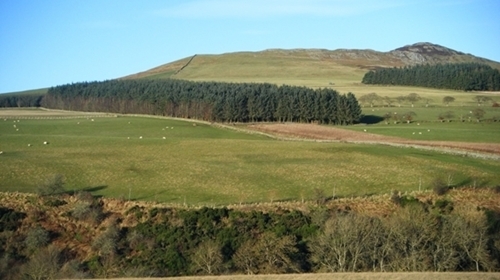
The term ‘Biodiversity Net Gain’ will be familiar to anyone involved in the land and wildlife management sector, and one that has gained increasing traction with policy makers in recent years. Broadly speaking, Biodiversity Net Gain is an approach to land management that leaves our wildlife and their habitats in a better state than before. This approach is at the heart of what we do at the Game & Wildlife Conservation Trust (GWCT): we have been at the forefront of promoting best practice game and Wildlife management as a force for nature conservation and environmental improvement on farmland, woodland, moorland and wetland for over 80 years. Our aim? To produce a thriving countryside rich in game and wildlife.
Through our research, the GWCT has demonstrated that good management of our natural environment can lead to significant knock-on benefits for a wide range of wildlife. From declining wading birds, like the lapwing and curlew, that benefit from the management of our upland estates, to improved species diversity in our lowlands as a result of habitat creation for pheasant and partridge releases, game management can deliver a net gain for biodiversity.
Nevertheless, bad wildlife and habitat management can negate the good work done by those ‘working conservationists’, our private land managers who are pioneering wildlife-friendly management in a productive countryside. Increasing concerns about the potential ecological consequences of how our countryside is managed means that there is, now more than ever, pressure on land and wildlife managers to demonstrate evidence of sound management – this is something we like to call ‘Best Practice with Proof’.
The GWCT now offer a Biodiversity Assessment service to help farms, estates, and wildlife managers to highlight where current management is benefitting biodiversity, identify where there is potential for negative impacts on wildlife, and help develop practical solutions and remedial actions that are sensitive to the needs of the land managers: delivering net biodiversity gain must work for the practitioner as much as it does for the politicians and conservation NGO’s.
We take a holistic view on assessing biodiversity, with each assessment tailored to the individual requirements of the estate, farm or shoot. Our approach is to provide a qualitative ecological appraisal of habitats and their condition whilst assessing the various aspects of estate management, to identify areas of good practice and to make recommendations for future improvements.
We first identify what species and habitats are already supported by current management and then identify what wildlife could be encouraged through adopting small changes to management in the future. As every farm or estate is different, so too does our level of input vary, from broad ecological appraisals to providing support with long-term biodiversity monitoring and habitat impact assessments. However, our aim in each case is to work with landowners and managers to provide evidence of good practice and to help produce an action plan for future conservation management.
It is likely that future financial support for the land and wildlife management sector, whether in the form of public payments from Scottish Government, or from private investment, will be conditional on demonstrating the outcomes of good practice. In a climate where land and wildlife managers are facing increasing political pressure and opposition from stakeholders, Best Practice with Proof will have increasing relevance, and the ability to demonstrate Biodiversity Net Gain will be an essential element of future proofing within this sector.
For further information, please contact Dr Nick Hesford at nhesford@gwct.org.uk.